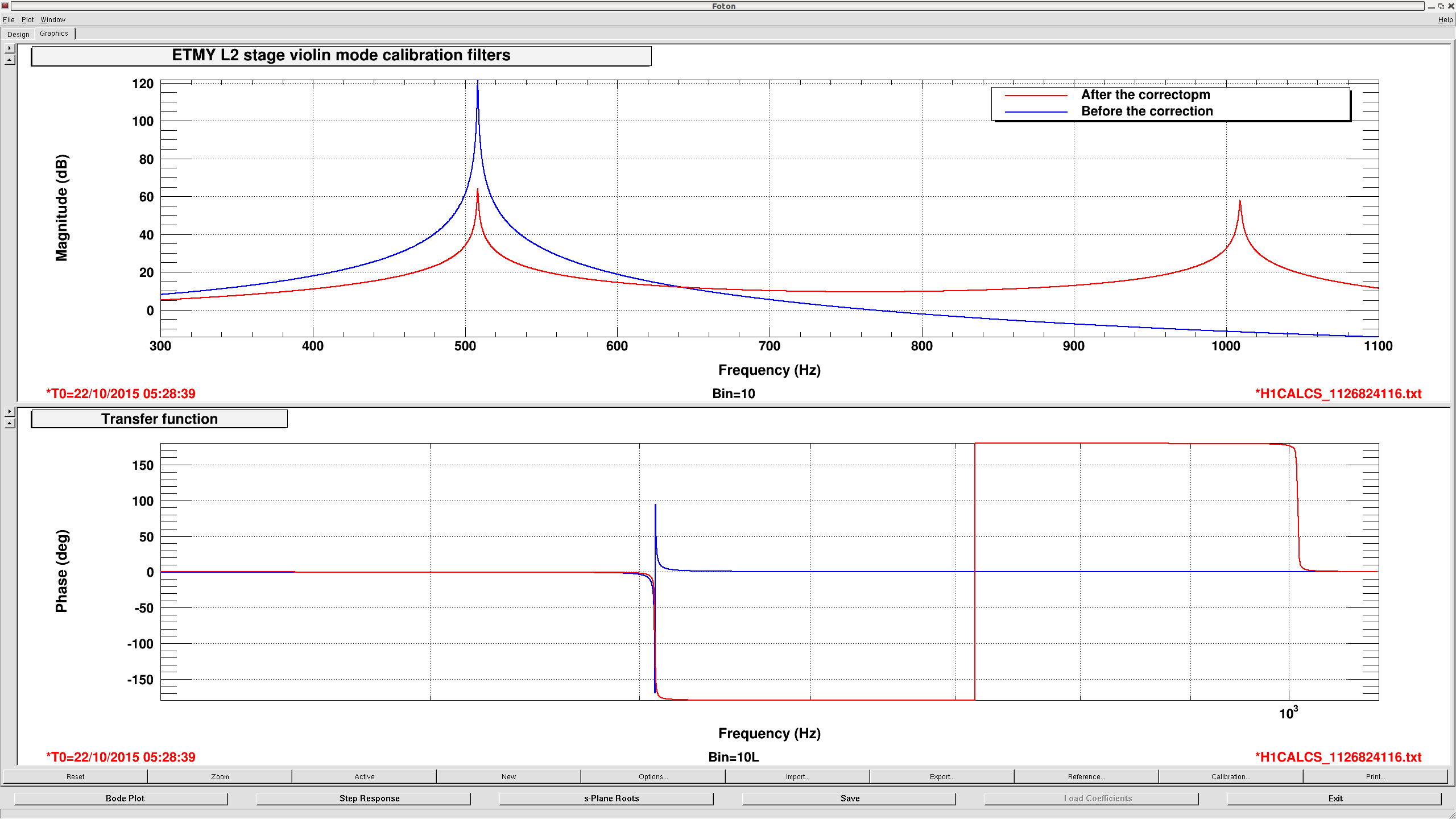I have update the violin mode filters in CAL CS in order to make them more accurate. This will impact on the calibration at sub-percent level at around 30 Hz.
Joe B pointed me out that the way my matlab script (alog 21322) handles violin's zpk was not ideal (i.e. I was implicitly assuming certain ordering in the zeros and poles in zpk data format). I corrected the script as was already done in Livingston (LLO alog 20512). This resulted in somewhat better accuracy for PUM in 1-100 Hz . The attached screenshots are the new filters and discrepancy between the full ss model and the installed discrete filters. Compared with the one I previously reported in alog 21322, the magnitude of PUM is now somewhat better. The magnitude of PUM at 30 Hz is now more accurate with a very small discrepancy of 0.08 % (which used to be 0.2 % discrepancy ), and it is also more accurate at 100 Hz with a small discrepancy of 0.65 % (which used to be 2.4 %). I do not expect any noticeable change in the binary range with this update.
I have installed the new filters and loaded the coefficients in CAL-CS.
This is a follow up on the change we made on the L1 and L2 stage violin mode filters for calibration.
As Andy reported in alog 22631, there had been a prominent peak at 508 Hz before the change on the violin calibration filters. This was due to the fact that both ETMY L1 and L2 stages of CAL-CS had a too high violin mode by mistake (see the original entry above) at 508 Hz. The spectral shape of the violin modes that he posted looks very similar to what we mistakenly had in CAL-CS before Sep. 14th.
I am concluding that the 508 Hz nonstationary behavior seen in the calibrated signals before Sep. 14th are indeed artifact due to too-high response in the violin calibration filters.
I made a comparison between the violin calibration filters before and after my fix on the matlab code. See the attached screenshots below:
Fig.1 L1 stage violin calibration filter. (Blue) before the bug fix, (red) after the bug fix.
Fig.2 L2 stage violin calibration filter. (Blue) before the bug fix, (red) after the bug fix.
It is clear in the plots that the previous filters had a high peak at 508 Hz and they were as tall as 120 dB ! Therefore the ETMY suspension calibration filters must have been unnecessarily sensitive to any small signals in DARM_CTRL before Sep. 14th. In fact, this was exactly the thing I was worried and was the main motivation to decrease the violin Qs down to 1e3 (alog 21322). Note that, according to the suspension model, the Q-factor of the violin modes can be as high as 1x109. However, we decided to artificially decrease the violin Qs for the actuator calibration filters in order to maintain the IIR filters reasonably stable. Otherwise, the modes would be easily rung up by numerical precision errors, a small step in the actual signal or anything.
I also attach the difference of the filters in zpk formt. See the third and fourth attachements. Since their violin Qs are chopped off to be 1e3, both L1 and L2 stages have the same frequency response.







